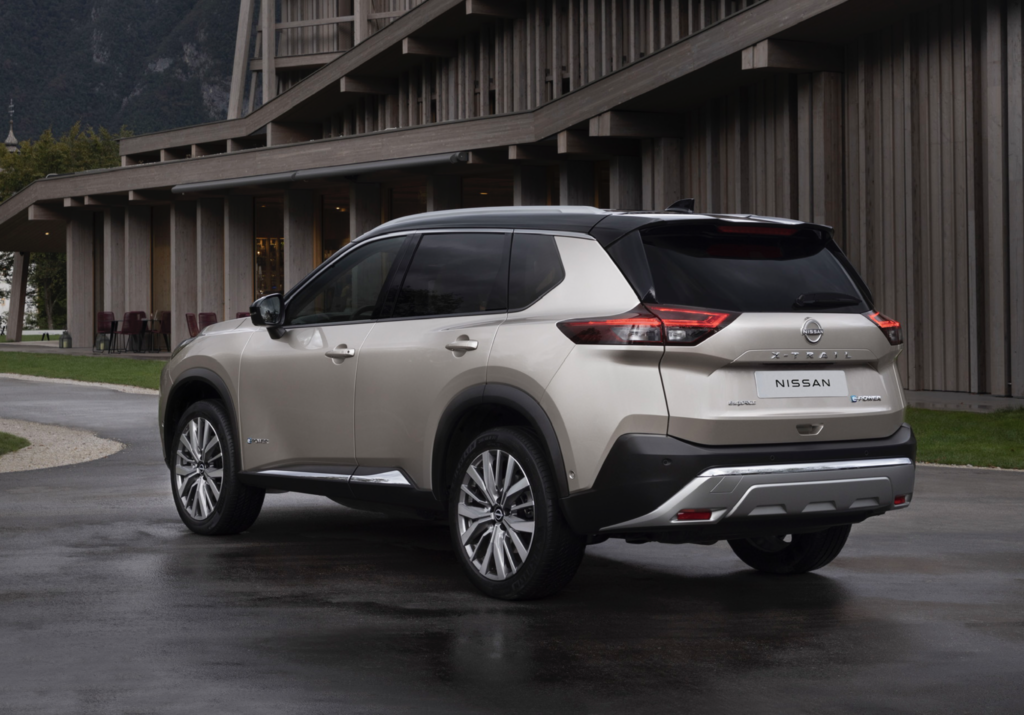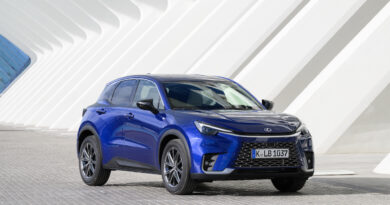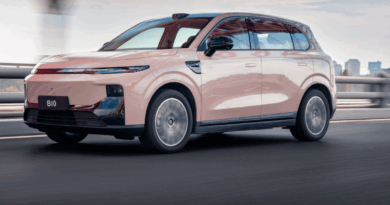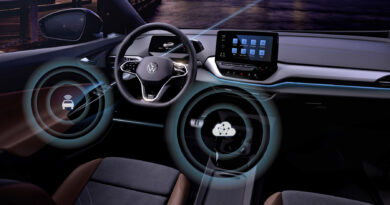Nissan X-Trail e-Power review: A taste of EV-lite
Nissan’s new hybrid tech has the potential to challenge Toyota’s dominance in Australia’s medium-size SUV segment with the RAV4. Around 75 percent of RAV4 sales are petrol-electric powered.
But the X-Trail e-Power with e-4orce will only be available in the top Ti and Ti-L grades, costing $54,190 and $57,190 before on-road costs.
This is $4200 more than the X-Trail Ti and Ti-L with a petrol-burning 2.5-litre engine, and more again than equivalent RAV4 hybrid models.
The fourth-generation X-Trail launches late this year, but the e-Power with e-4orce hybrids won’t arrive until early 2023.
READ MORE: Nissan e-Power hybrid tech explained
READ MORE: Nissan will bypass PHEV phase with e-Power
READ MORE: Nissan Patrol to shun hydrogen, focus on e-Power hybid
READ MORE: Nissan’s global EV ramp up leaving Australia behind, Ariya now 2023
The name is clunky, but Nissan’s system is smoothly impressive. We tested the X-Trail hybrid at its international launch in Slovenia.

The route included motorway, major arterial and winding mountain roads, gravel-surfaced forest tracks and narrow village streets.
There was enough distance and variety to arrive at the conclusion that Nissan’s hybrid system is better, in a number of important ways, than Toyota’s.
Nissan e-Power: About the marketing guff…
Before we get to the advantages, it’s worth explaining exactly what e-Power with e-4orce actually means.
The e-Power part is Nissan’s name for its new hybrid system, and that ‘e’ is intended to emphasise what’s unique about it.

Electric motors are what turn the wheels of e-Power hybrids. Nothing else. Ever. This is what sets them apart. All other hybrids on the market today, whether labelled “mild” or “full”, whether made by Toyota or another manufacturer, use both ICE and electric power to spin their wheels.
Though an ICE is an essential part of the e-Power system, its only role is to power a generator to produce the electricity to power the motors that turn the wheels. Nissan contends that this gives e-Power more of an EV feel than other hybrids.
Under the bonnet of the new X-Trail hybrid is a turbo 1.5-litre three-cylinder engine equipped with a high-tech variable-compression system previously used in various 2.0-litre fours from Nissan luxury brand, Infiniti.
It’s exactly the same as the unit in the new Qashqai e-Power that will go on sale soon after the X-Trail e-Power, including its maximum outputs of 116kW and 250Nm. The electrical output of the generator bolted to this engine will be a little less, because no energy conversion is ever 100 percent efficient.
While the electric motors in the front axle of both the X-Trail and smaller Qashqai e-Power hybrids are the same, it produces 150kW, which is 10kW more, in the larger SUV.
The battery packs used in both are also essentially the same, with a usable capacity a little below 2.0kWh. This small pack is installed beneath one of the front seats.
Though the generator can charge the battery directly in some circumstances, its basic role is to store the energy recovered through regenerative braking. The pack’s maximum output is 66kW.
Where the X-Trail differs from the Qashqai is in having a second electric motor. It’s mounted in the rear axle, so making the larger hybrid SUV all-wheel drive.
The X-Trail’s rear motor delivers 100kW, but the vehicle’s maximum output isn’t this number added to the 150kW of the front axle for a total of 250kW. The e-Power system’s generator and battery pack simply can’t deliver this much electrical power.
According to Nissan engineer Dan Connelly, maximum system power is 157kW. The maximum system torque figure, however, is a very hefty 525Nm.
The advantage of the arrangement is that it allows great flexibility in distributing power and torque between the two X-Trail’s axles. Nissan’s engineers use this to minimise pitching during both acceleration and braking.
This is the logic behind the “with e-4orce” label. Simply calling the X-Trail’s system e-Power 4WD wouldn’t confuse customers enough for Nissan’s liking, apparently.
Smooth and sometimes EV-like
The X-Trail e-Power with e-4orce makes a very good first impression. It’s very quiet and smooth at low speed. Luxury level refinement, near enough.
Frequently able to drive two or three or even more kilometres on battery power alone, the Nissan hybrid is serene to drive through towns.
Low speeds also mean its electric motors have low power needs, so the ICE doesn’t need to rev hard to power them when the battery pack is exhausted. The X-Trail is also equipped with ANC (active noise cancelling), and it seems to make the ICE almost inaudible when it’s not revving hard.
But the hybrid SUV’s step-off from standstill isn’t in the same league as an EV. It lacks both the raw thrust and instant responsiveness of a dual-motor EV. It’s obvious why this is so; the ICE takes a little while to wind up to the revs for maximum power generation.
Once rolling, the X-Trail hybrid does a better EV impression. Especially when climbing, the Nissan doesn’t feel like it’s straining. Engine noise is only faintly audible and not a lot of accelerator pressure is needed.
Responsiveness from the e-Power system is quicker when the X-Trail is getting along at medium to high speed, though flooring the accelerator will always raise the noise level from the engine compartment to its not very high maximum.
The e-4orce tech seems to be effective. The X-Trail resists nosedive when braking viciously and tail squat when accelerating vigorously.
Like an EV, the X-Trail hybrid allows the driver to select a preferred level of regeneration. It’s mild in D, but can be increased noticeably by nudging the stubby selector lever backwards to get B mode. Toyota hybrids work the same way, it should be mentioned.
But the X-Trail also has a button to select a Leaf-like e-Pedal mode. Much stronger regeneration makes one-pedal driving possible in this mode.
Finally, selected the Eco on the X-Trail’s driving mode dial kills regeneration completely so the Nissan sails or coasts when the accelerator is released. This improves the vehicle’s energy efficiency according to engineer Connelly.
Though the X-Trail hybrid’s fuel efficiency is good – 6.1L/100km in the official Australian consumption test – it fails to match the RAV4’s. It will be very interesting to find out whether the difference exists in real-world driving conditions.
Nissan e-power: In summary…
The X-Trail e-Power with e-4orce does drive more electrically that other hybrids (PHEVs excluded), and is all the more likeable for this. So Nissan’s EV-like claim isn’t complete fluff.
But the arrival of this tech would be more noteworthy if Nissan Australia had managed to extend its e-Power with e-4orce offer into the less costly ST and ST-L X-Trail variants.
This could happen. In some European markets the X-Trail is available with front-drive e-Power – no e-4orce – in mid-grade models. And Nissan Australia doesn’t rule out adding them to the line-up here during the market lifetime of the new X-Trail.





The Nissan Patrol Y63 with e-power/e-4orce would sell well in Australia. The big negative I see is the small battery size land lack of PHEV capability. 2kWh battery is not very useful except for regen braking as said in article above.
Many Australian’s would appreciate a 15-20kWh hour battery that could be charged with a plug and discharged at 240V when on worksite or camping. Nissan are missing out on a large market by not having PHEV capability. The Toyota 300 series is a poor replacement for my 200 series V8 Landcrusier, Nissan have an opening to once and for all out sell Toyota in the heavy 4WD segment, they just need to think more of their customers.